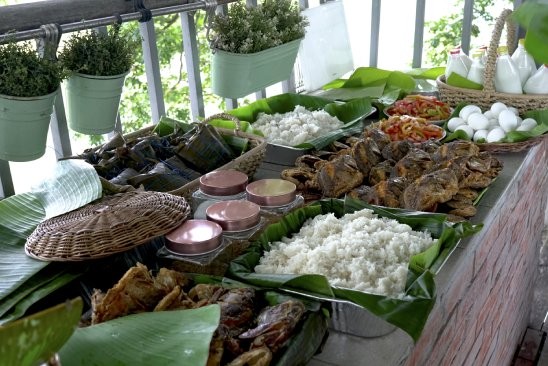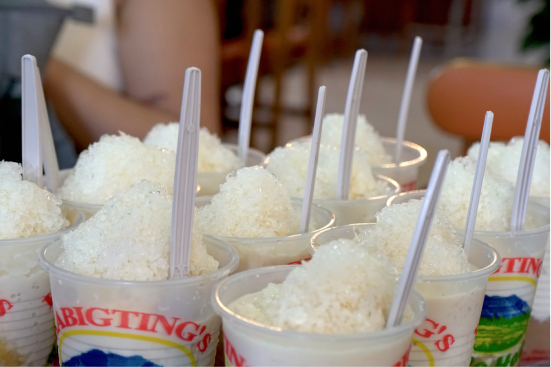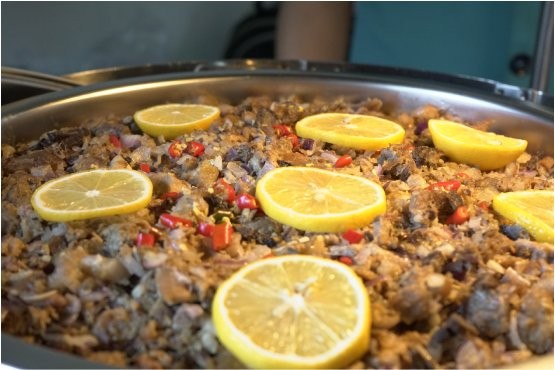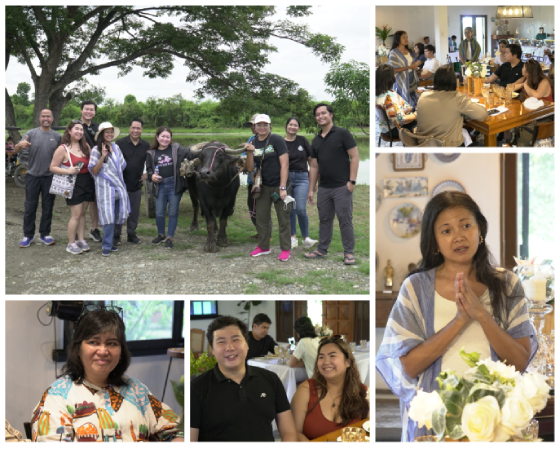How to Make your Brand Stand Out
Being a newbie in any industry is tough, most especially in the cutthroat world of food and bever-ag...

August 30, 2024
Explore the gastronomic wonders of the Culinary Capital of the Philippines in a food heritage tour curated by FOODPhilippines Advocate par Excellence Clang Garcia.
Travel preparations could be tedious as there are numerous things one should consider before hitting the road. Topping the list could be the budget just as nobody would want to splurge in the guise of a week’s break. Another is the destination itself, the main motivation which drives one to book a ticket, pack a bag, and enjoy the outdoors. But things are a little different for Clang Garica, one of the country’s leading culinary heritage champions and FOODPhilippines Advocate par Excellence, who was lured to explore the country’s culinary gems in every corner.
It was an early Friday morning, the last day of the work week, but everyone’s excited for the day’s road trip. Eight media partners were invited by the Center for International Trade Expositions and Missions (CITEM) to join Clang Garcia in a curated food crawl called “Culinary Heritage Tour.”
The tour kicked off with Clang sharing a piece of her story, allowing everyone to take a peek into her culinary odyssey — how it started and how she was chosen by the World Food Travel Association (WFTA), the world’s leading authority on food tourism, as its official Philippine ambassador.
“I chanced upon the World Food Travel Association when I was doing my research online. Their mission is to promote and preserve culinary heritage and culture through hospitality and tourism. That’s when I realized that their mission aligns with mine - WFTA really is my tribe,” shared Clang whose vivid recollection of her first encounter with her home organization had sparked joy in her eyes.
But things were not smooth-sailing at first especially for Clang whose vision would require her to cross oceans, moving Filipino food forward. Clang went through a series of training and interviews. When asked about the reason why she wanted to join the WFTA, Clang said, with all conviction and might, that she wanted “the Philippines to become the next gastronomy destination in Asia.” To which WFTA Founder and Executive Director Erik Wolf replied, “where is the Philippines in the Southeast Asian table? Perplexed, that’s when Clang learned that a lot of work still has to be done.
Cut to the present, with a treasure trove of insights and a bus full of people who believe in her vision, the WFTA Philippine Ambassador has been embarking on a culinary journey on the rich diversity of Filipino food and culture. And today’s stop is the Culinary Capital of the Philippines — Pampanga.

Taste of tradition: Rich, creamy, fresh carabao milk was up for grabs after a three-hour road trip from the metro.

A classic Kapampangan breakfast giving farm-to-table freshness.

Trying to beat the heat? One can never go wrong with Kabigting’s halo-halo.

Estancia de Bacolor delights the whole team with hibok-hibok, seeped in rich culinary heritage that goes beyond taste.

No eggs on top! Kapampangan sisig is definitely to die for.
Hours away from the heart of Manila, Pampanga is known for its culinary landscape marked by notable recipes handed down through generations. The province takes pride in its home-cooked dishes, a nod to the joy that Filipino “salu-salo” (feast) brings. It is for this reason that Clang thought of taking the culinary tour across Pampanga, home to unique food trends.
The tour kicked off with an appetizing breakfast in a farm fronting the breathtaking Mount Arayat. Everyone was treated to tamales, a classic Kapampangan delicacy made from ground rice and coconut milk, topped with chicken strips, ham, nuts, and eggs. This was complemented with fresh carabao milk quenching everyone’s thirst. It was a simple meal made special with farm-to-table freshness that the city’s hustle and bustle couldn’t offer.
A few blocks away from the farm was the famous Kabigting’s Halo-Halo. It was a perfect treat for a sunny day, where everyone had the chance to indulge in the best-selling halo-halo. The icy treat was a combination of unique ingredients such as Haleyang beans, creamy corn, and homemade pastillas made from Carabao’s milk. There was no better way to beat the scorching heat other than this ice-cold, creamy blend.
Next stop was San Guillermo Parish, one of the oldest churches in Pampanga. Known as the “half-buried church” in the City of Bacolor, it has endured the test of time following the second-largest volcanic eruption of the 20th century through Mount Pinatubo. Apart from serving as a place of worship for locals, the church has become a tourist attraction after it was used as one of the key locations for a local TV primetime series.

To cap the trip, a five-hectare private farm opened its doors to the culinary tour. Estancia de Bacolor is an agritourism destination that blends comfort with the rustic charm of farm life. A sumptuous lunch was served at Ima’s Kitchen, the farm’s in-house restaurant, where everyone was treated to local delicacies with a dash of Kapampangan twist. It was a collection of fine-tasting dishes such as beef caldereta, fresh lumpia, and pancit bihon. But the dining experience was punctuated by the classic Kapampangan dish Sisig. Authentic Kapampangan sisig is a flavorful concoction of chopped pig’s ears and snout mixed with chicken liver and a sour relish. Unlike the usual sisig served in the Metro, the original Kapampangan delicacy does not need any add-ons or fancy ingredients. Kapampangan sisig is truly a classic, packing a symphony of flavors all in its simplicity.
Asked about the best part of the culinary tour, Shyn Quitain from Philippine Daily Inquirer, flooded with nostalgia, brought back a core memory. A fleeting longing was felt as she recalled the flavor profiles she had tasted that day.
“The best part, for me, was when I had the chance to try the dishes served here in Estancia de Bacolor because my grandmother hails from Pampanga. And these are the delicacies that my grandmother and I shared growing up,” Shyn shared.
“Among the dishes, the best one for me is sisig. It was the kind of sisig that I grew up with. There are all kinds of sisig recipes, but the Kapampangan version is the one that I’ve been searching for so long,” She added.
For her part, Clang extended her gratitude to all, hoping that this experience has ignited the culinary wanderlust in each and everyone.
“May this journey spark excitement as you plan your gastronomic adventure. Consider every trip as a motivation to keep us on track as we all continue to explore and champion for Philippine culinary heritage,” Clang ended.
To know more about culinary heritage tours with renowned gastronomy expert Clang Garcia, you can visit Food Holidays on Facebook, X (formerly Twitter), and Instagram.
Catch IFEX Philippines, the country’s biggest trade show for food and ingredients, on May 22-24, 2025 as it aims to continue the narrative of championing Filipino food which is best shared by promoting the hidden gems of the country. IFEX Philippines is organized by the Center for International Trade Expositions and Missions (CITEM).
Check out these food fusions between Filipino and Middle Eastern cuisines
The unending quest for healthy and sustainable food amid changing lifestyles
A quick look at the Philippine food staple often getting a bad health rap